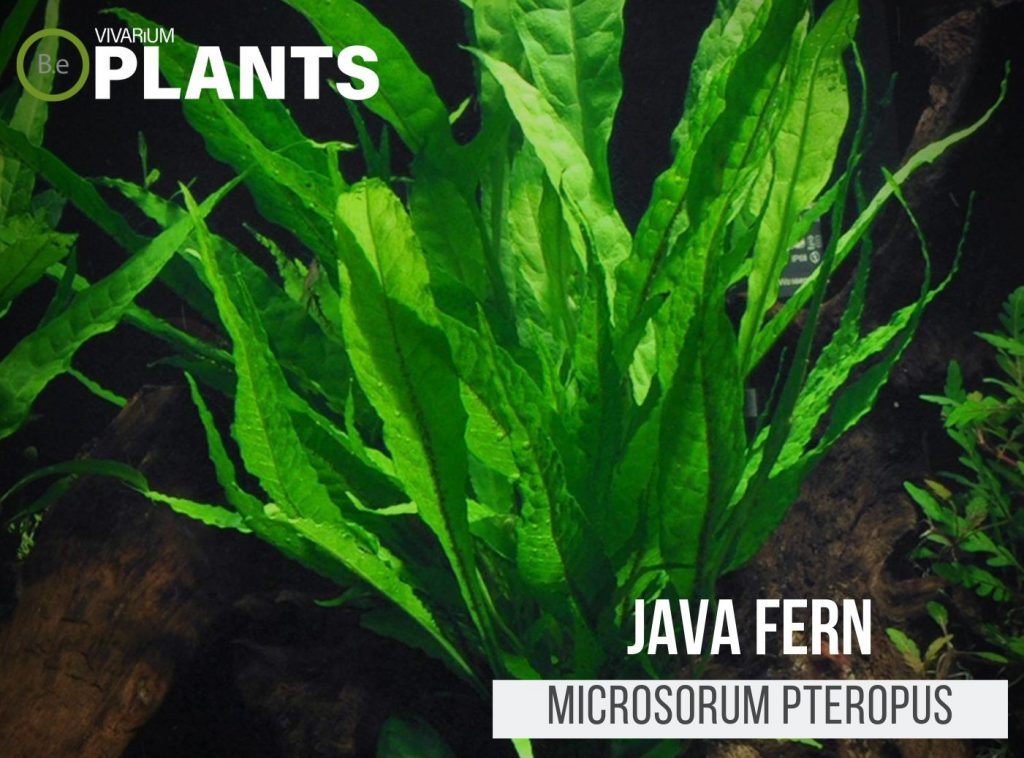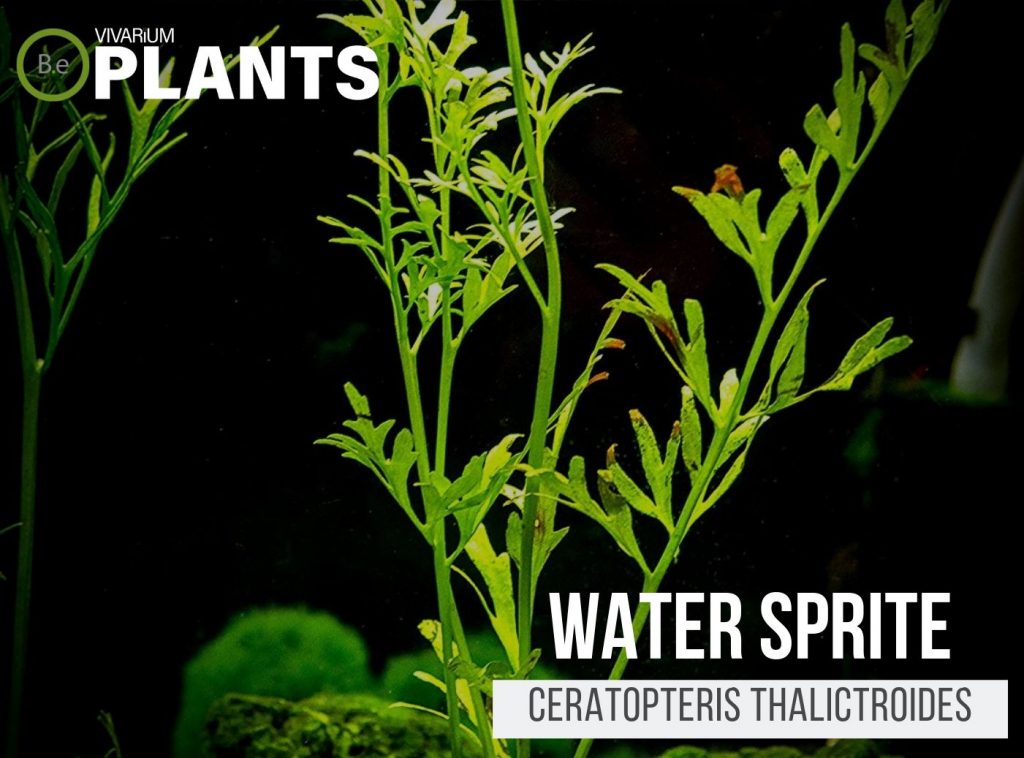Are you looking for a way to change the look of your aquarium?
Aquarium ferns are a great way to do it!
These plants are not only beautiful, but they are also versatile, easy to care for, and they can help to maintain a healthy, well-balanced tank environment.
In this article, we’ll be covering the aquatic types of miniature ferns, how to take care of them, how to ensure they’re thriving in the tank, as well as some unique ways to decorate with them.
So get ready to learn all about aquatic ferns and how they can bring beauty and balance to your tank!
Table Of Contents:
ToggleWhat Are Aquarium Ferns?
Aquarium ferns are a popular species of ferns that thrive in fully aquatic enclosures.
These plants have delicate, frilly foliage and provide a calming presence.
Not only do they add beauty to your aquarium, but they also help balance out the environment inside the tank by providing oxygen.
In turn, helping reduce nitrate levels, and providing much-needed organic matter for natural decomposition.


Aquarium ferns can come in many different varieties, ranging from smaller slow-growing midground plants to tall background ornamental plants.
So mix and match the types available to bring a unique and vibrant look to your tank.
There are a few things to consider when keeping ferns.
Among those are proper lighting, nutrition, and substrate, but with the help of this guide, these plants will thrive and add a natural, living element to your aquatic paradise.
Best Aquarium Fern Varieties to Consider
There are literally hundreds if not thousands, of aquatic ferns one could consider for an aquarium, riparium, and/or paludarium.
I’ve taken the time to curate a list of the most common types of ferns currently popular in the fish tank hobby.
These are popular for many reasons including ease of maintenance, benefits, and aesthetics.
Floating Fern (Salvinia natans)
This fast-growing green fern is an exceptionally popular choice for aquariums.
Its two-part leaves make it an excellent choice for surface coverage and it is easy to care for and maintain.
Its’ small leaves and tight growth pattern make it ideal for the beginner aquarist looking for a bit of extra drama in their tank.
Mosquito Fern (Azolla filiculoides)
Unlike other aquarium ferns, the mosquito fern is a free-floating fern that lives on the water’s surface.
This amazing fern reproduces quickly and produces oxygen while providing lush coverage to the upper levels of your aquarium.
Its small size makes it an ideal aquarium plant for smaller aquariums.
Java Fern (Microsorum pteropus)
This tall-stemmed aquarium fern is a popular choice for beginner aquarists.
It requires minimal care and is tolerant of a wide range of water parameters and conditions.
Java fern grows slowly but provides a strong display and is perfect for adding an interesting backdrop to your tank.
Water Sprite Plant (Ceratopteris thalictroides)
Water Sprite is a hardy fast-growing aquarium fern that has been a favorite of aquarists for decades.
It has a unique shape and is a great choice for those aquarists looking for a dramatic centerpiece for their tank.
The water sprite plant does best in low light conditions and is a great addition to any aquarium.
African Water Fern (Bolbitis heudelotii)
African Water Fern is an ideal choice for those looking for a slow-growing and easy-to-care-for aquarium fern.
Its size makes it ideal for small tanks, yet its growth rate is one of the fastest among aquarium ferns.
This fern also requires only minimal lighting and is an ideal choice for low-maintenance aquarists.
Broad-Leaf Water Sprite (Ceratopteris cornuta)
This unique aquarium fern has broad leaves and a strong root system making it an ideal choice for aquarists looking to fill a larger space in their tank quickly.
Its leaves are high in tannins and help keep the water healthy and clean.
It is easy to care for and requires minimal effort to maintain.
Planting Procedures: Maximizing the Care and Maintenance of Your Aquarium Ferns
Planting procedures for aquarium ferns must be done with great care and caution in order to keep these small plants safe.
Although there are many different types of aquatic ferns, they all require similar conditions.
Before planting your fern, make sure that the bottom of the tank is covered with a thin layer of substrates, such as aquarium-safe gravel or sand, to provide a firm and secure base for the fern’s roots.
Next, gently place the fern in the center of the tank. Make sure to press gently so that the roots adhere to the bottom of the tank.
Finally, pour enough water into the tank to bring the level of the water above the fern’s roots, and adjust the lighting according to what the specific type of fern requires.
Utilizing the provided list above, aquarium ferns will thrive and add life and beauty to your tank for years to come.
Tips on Keeping Aquarium Ferns Healthy and Thriving
Healthy aquarium ferns are essential to maintaining a balanced aquarium environment.
All aquatic plants require careful consideration when adding them to any aquarium system.
Proper water parameters, such as pH, hardness, and nitrate levels, must be properly monitored to ensure that the plants can thrive and develop.
Here are a few tips to help you keep your aquarium ferns in top condition:
- Choose a spot with decent lighting: Ferns require a decent amount of light to stay in peak condition, so make sure to pick an area of the tank where other plants and hardscape features don’t block needed access to lighting.
- Use liquid fertilizer: Supplementing fertilizer can help keep your aquatic ferns looking luscious. Use a liquid fertilizer and feed the plants once a week if you think they need a little bit of a push.
- Keep their roots moist: To ensure that your ferns thrive, their roots must remain moist. Be sure to not let them dry out in paludarium/riparium setups, as this can be damaging to the plant.
- Monitor water parameters: aquatic ferns are pretty hardy and can tolerate most water conditions, but it is important to monitor pH and other factors to ensure it stays within the optimal range.
Following these tips will help you keep your aquarium ferns looking healthy and vibrant.
With proper care and maintenance, your ferns will be the envy of any tank.
Balancing the Aquarium Environment to Ensure Proper Growth of Aquarium Ferns
When it comes to aquarium ferns, adding the right number of plants to an aquarium is one of the most important decisions to make.
Too many plants in the aquarium can potentially inhibit oxygen levels and reduce the water’s ability to absorb much-needed nutrients.
On the other hand, the right amount of ferns can provide a healthy balance of nutrients and oxygen in the aquarium, allowing your ferns to reach their full potential.
It is also essential to make sure you have a good light source in your aquarium.
Quality lighting helps aquarium ferns to grow faster and more efficiently, giving them the nutrients and light they need to stay healthy and vibrant.
The proper lighting intensity and sources, such as LED, metal-halide, and fluorescent lighting, are necessary to ensure your ferns receive optimal nutrient absorption, and photosynthesis and grow properly.
Ferns are an important part of any aquarium ecosystem, but it is important to be aware of the key factors that ensure proper aquarium fern growth.
With proper care and balance, aquarium ferns can bring many benefits to any tank environment.
How to Make Sure Aquarium Ferns Get Enough Nutrition
Getting aquarium ferns the right amount of nutrition is key to their health and growth.
The most important elements of nutrition that these ferns will need are good quality fertilizer, light, and carbon dioxide.
It is important to give your ferns the right balance of nutrients.
You should add a good quality fertilizer to the tank to help the ferns get the proper nutrients it needs.
Additionally, make sure to provide them with plenty of light, preferably in the form of full-spectrum LED lights.
This light spectrum will not only help them with photosynthesis but also allow them to have more intense colors!
In order to make sure that your aquatic ferns have enough carbon dioxide, you will need some sort of way to inject it into the tank.
Many aquarium plants, including ferns, require additional CO2 for proper growth and can benefit from the use of CO2 diffusers, injectors, and reactors.
By providing your aquarium ferns with the right balance of nutrients, high-quality light, as well as additional CO2 when needed, you can ensure that they will flourish and remain healthy.
Unique Ways to Decorate the Aquarium Utilizing Aquarium Ferns
Aquarium ferns provide an attractive addition to the layout and design of any aquarium.
In addition to their aesthetic value, aquatic ferns also play an important role in oxygenation, providing hiding spots for fish, and helping to soften the aquarium ambiance.
There are many different types of water-thriving ferns, as well as various unique ways to decorate the aquarium with them.
One way to decorate the aquarium with ferns is to use them to create an interesting background.
For example, by planting taller varieties, such as Java and Bolbitis Ferns, you can create an exciting and visually appealing backdrop.
Additionally, a combination of planted and floating ferns can be used to great effect and the combination of the two different varieties will give the aquarium a unique, personal touch.
Ferns can also be used to create rock or wood formations, allowing for a more interactive environment for your aquarium inhabitants.
When placing the wood and rocks, you can use ferns to fill in any gaps and bring the structure to life.
The formation’s nooks and crannies will provide a perfect hiding spot for timid fish and shrimp.
Overall, aquarium ferns provide both decorative and functional value to your aquarium.
With the right combination of different varieties, you can create a unique and personalized layout that is also great for fish and other aquarium inhabitants.
Common Problems with Aquarium Ferns: How to Solve and Prevent Them
Nutrient deficiency can occur if there are not enough nitrates and iron in the tank’s water.
To ensure your aquarium ferns receive enough nutrients, perform regular water tests and supplement with iron fertilizers.
The algae growth can occur if the tank receives too much light, or if the light does not provide the right spectrum.
If your ferns are prone to algal blooms, place filters over the lights, reduce the amount of light the tank receives and keep the tank away from direct sunlight.
Discoloration is a common issue that can occur when aquatic ferns are placed in poor lighting conditions.
If you notice your ferns taking on a yellowish hue, adjust the light intensity in the tank, and consider adding supplemental lighting.
By proactively addressing these common aquarium plant problems, you can ensure your tank remains healthy and your ferns flourish.
In Conclusion
Adding aquarium ferns to your tank offers a host of benefits to both you and your fish.
Not only do they look beautiful and add some texture and interest to your setup, but they also help to create a balanced and healthy ecosystem.
This type of aquarium plant can help to reduce nitrate levels as they break down waste, providing oxygen and releasing other beneficial nutrients into the tank.
Additionally, aquatic ferns can provide a refuge for small fish and a place for your fish to explore!
They are relatively easy to care for and can be propagated, making them a great addition to any aquarium setup.
With all these advantages, it is clear why ferns would make an excellent addition to your tank.
They are sure to bring a touch of natural beauty and improve the health of your aquarium.
Frequently Asked Questions
Yes, there are aquatic ferns! Several varieties of aquatic ferns exist, including Azolla fern, water fern, and floating water fern, among others. Many of these aquatic ferns grow in slow–moving or standing water, often in shallow areas or along the margins of bodies of water.
Yes, ferns can be kept in aquariums. They make a great decorative addition and also help keep aquarium water clean. When selecting a plant for an aquarium, be sure to research its needs and ensure that it is suitable for the type of aquarium setup you have. Ferns will require good lighting and filtration to thrive.
The “Aquatic Fern“ is a common name for a unique species of plant, known as Marsilea quadrifolia. It is an aquatic, rhizomatous fern native to Australia, New Zealand, and other nearby regions. Its fronds are divided into four leaflets, giving it the common name of “four–leaf clover“ in some areas.
To plant aquatic ferns, first choose an appropriate container for them. Fill the container with damp potting soil, leaving extra room at the top. Then, put the ferns in the container and cover them with more soil. Lastly, add a thin layer of gravel over the soil and keep the container filled with water.
Yes, ferns are excellent pond plants, providing shade and oxygen for fish, tadpoles, and other aquatic wildlife. They help to keep pond water clear and free of algae, and their long roots allow them to absorb excess nutrients before they can cause algae growth. With their lush foliage and unique look, ferns make beautiful additions to any pond or water feature.
The smallest aquatic fern is the Azolla filiculoides, also known as the mosquito fern. Native to the Americas, this small fern typically grows to less than 2 cm (0.8 in) across and can take on colors ranging from deep red to green and pale pink. Unlike most ferns, Azolla filiculoides can live in both aquatic and terrestrial habitats, making it an ideal plant for wetland restoration.






